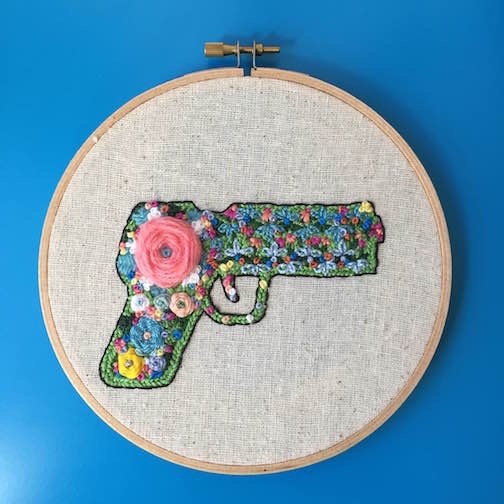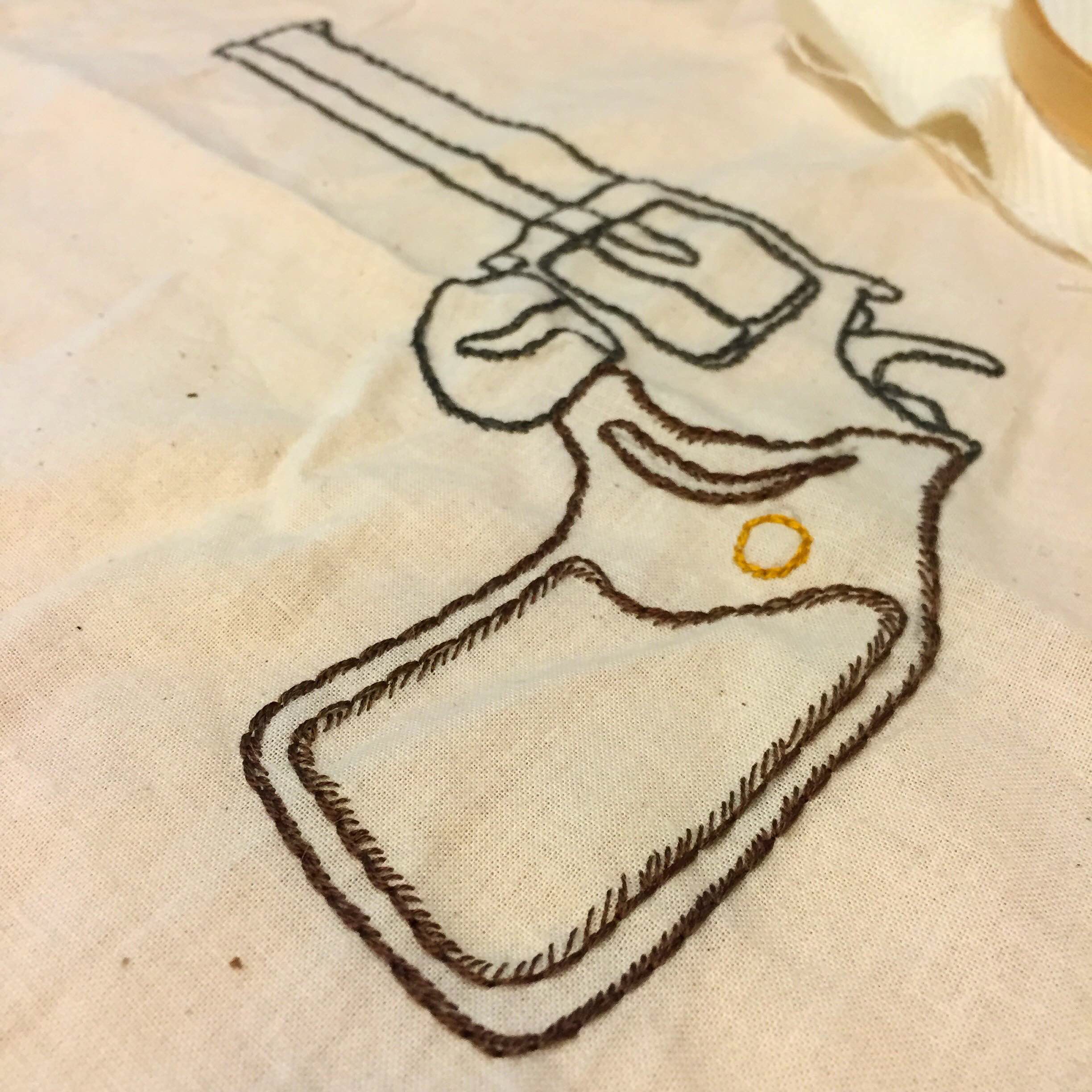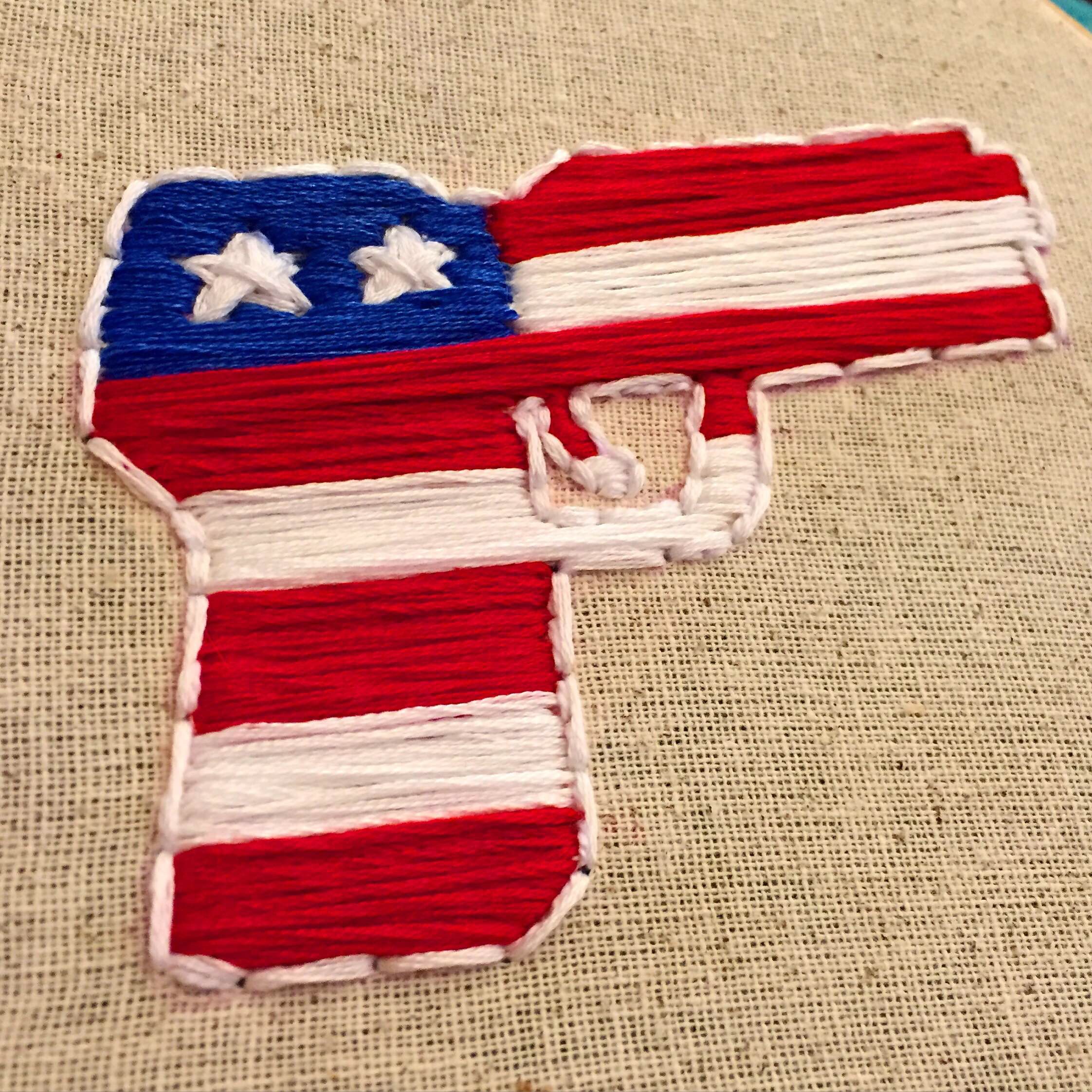Today’s interview is with Krista Barmer, @pendrops! These bi-weekly interviews are a place to learn more about what craftivists are up to around the world, and I find people and their work by searching #craftivism over at Instagram. If you’d like to be interviewed (or know someone who I should interview), please drop me a line!
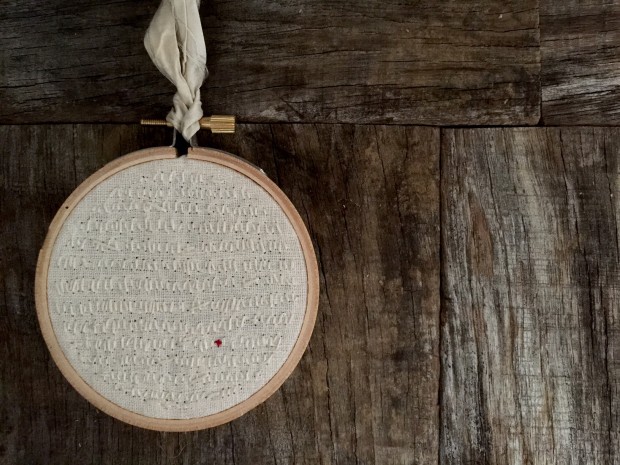
1. What does craftivism mean to you?
For me, craftivism is three-fold. Practically, it means using creative techniques and mediums to draw attention to social issues. Secondly, if that art piece is sold, it means giving some percentage or all profits from the sale of that art piece to organizations that do work in that line of social justice. And lastly, it’s about telling a story. Because social issues are so vast, stories must help us connect to them. Whether it’s a literal or abstract expression, a story must be expressed in order to connect and inspire.
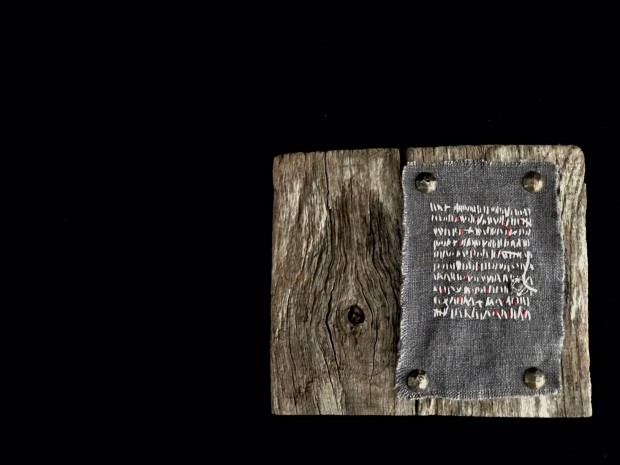
2. Tell me about the Freedom Collection stitched pieces. What are they? How did they come to be?
The Freedom Collection is a series of textile art pieces that came to me in such a beautiful, unpredictable way! As an artist, I am always seeking to be present to everything around me and then channel what I’m observing and learning into a piece of textile art. My passion is always to connect something in my story to someone else’s story.
So this past spring, I watched a documentary called “The True Cost†about fast fashion and the sweatshop workers who pay a high price – sometimes with their lives – for consumerism and greed. I was already on board with the action points that the documentary talked about: I don’t buy clothing from foreign or domestic sweatshops and I have a minimalist closet. I began wondering what more I could do.
In the days after I watched the documentary, the first Freedom Collection piece started coming together. This issue of forced labor and slavery was so heavy on my heart and mind after the documentary and was tied so closely to a cause I’ve united with for more than a decade, it was inevitable that this collection emerged.
I stitch every day no matter what and I don’t really plan my projects, so the Freedom Collection just started pouring out of me. The design, the upcycled scraps of linen, the vintage threads and antique embellishments, the organically grown cotton fibers. Each material had a purpose, every stitch meant something, even the tatters and fragments spoke something to me about the precious lives caught in forced labor and slavery. I have always believed that the stitch is not a means to an end…it is the end. I love every stitch, just for its own sake. Even the ones that get tangled or snagged. I leave them as is because they introduce dimension and interest and beauty. That’s how I feel about all lives and, in this case, the lives of women and girls, mothers and daughters and sisters, in slavery and forced labor. They are not just a means to an end, something to be used and thrown out after we get what we want. Their lives matter, they have value and worth and belonging. So these meticulous, countless stitches represent their lives and their inherent value.
So the Freedom Collection was born very organically, an abstract textile representation of the lives of women and girls in forced labor within the global textile industry.
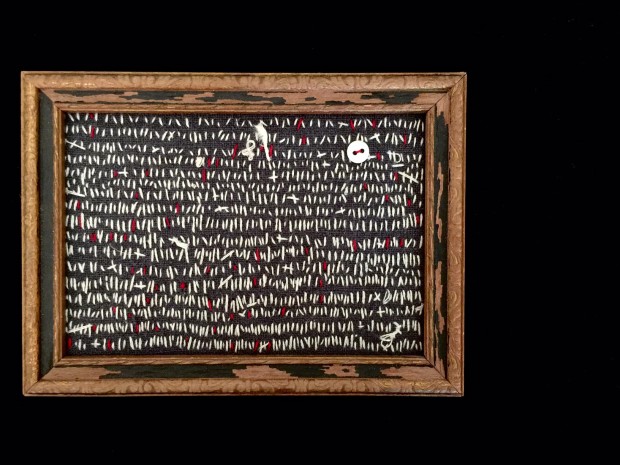
3. Your work is about slavery and forced labor. Has making it changed you in any way? If so, how?
Making these pieces has absolutely changed me. Learning more about the issue of modern day slavery and forced labor in the global textile industry has challenged me to speak boldly in order to bring awareness to this issue. Hearing stories of individual women and girls in slavery and forced labor has stirred an even deeper compassion and empathy in me. And understanding the necessary steps to combat fast fashion, forced labor, modern slavery, systemic poverty, and consumerism has increased my commitment to this cause.
But even beyond that, the meditation of my heart and mind each time I sit down to work on a Freedom Collection piece has changed. I think of my sisters around the world. My fingers may ache after a couple hours of stitching, but I am in a comfortable chair, in an air conditioned room, in a clean, safe building, and get to be with my family while I stitch. These women often have to send their children away to live in better conditions while they work in big cities for 16-hour days, in dangerous, filthy buildings. I now think of these women with every stitch.
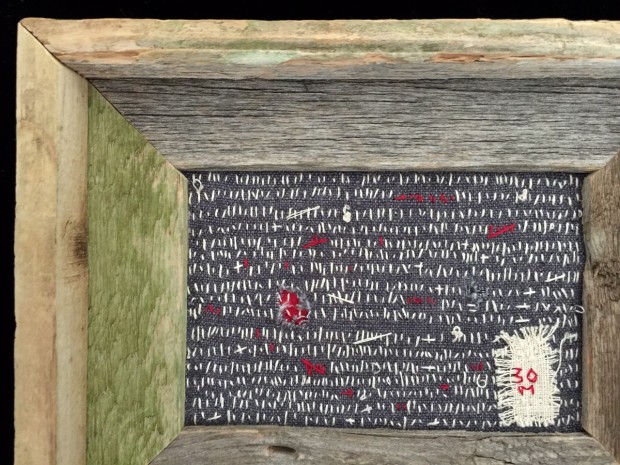
4. You donate the proceeds of your work to the International Justice Mission (IJM). Why did you choose to donate to them specifically?
There are so many fantastic organizations who are working to end modern slavery. For me, I support IJM because of their effective model. They don’t just recover victims of slavery from traffickers, they also restore survivors of slavery to their communities, they work with local police to restrain criminals, and they represent survivors in court while working with local prosecutors. IJM has a track record of getting at the root of slavery and forced labor, to strengthen local justice systems around the globe, and prevent violence against the poor. They have a deep, tireless commitment to seeing slavery end in our lifetime. That’s why I have supported their work for over a decade.
5. What are your craftivist-related plans for the future? Where do you want to take this project? Is there a next craftivism-related project you’d like to do?
My craftivist plans are to continue making the Freedom Collection pieces for a long time. I’ve been overwhelmed by the support these pieces have received and am thrilled at the funds I’ve been able to donate to IJM the past few months.
I also plan to create more small-scale pieces that most anyone would be able to afford. My first few Freedom Collection pieces were larger, upwards of $100 USD. I’m now creating exceptional-quality, smaller pieces that are in the range of $25-$35 USD. This allows almost anyone to purchase a one-of-a-kind, artisan-crafted textile art piece while also donating to a worthy cause, all for the price of a new shirt.
I don’t usually plan out projects, but I have a project in the works creating pieces that raise awareness about depression and anxiety disorders. I plan to start focusing on those later this year.
***
Thanks, Krista!
You can check out more of Krista’s work over on Instagram, @pendrops.
She can also be found via her Etsy shop, PendropsCouture.



